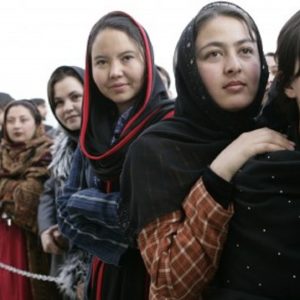When George Floyd was killed by a Minneapolis police officer this spring, protests rightfully and righteously erupted around the world demanding justice.
The very same month, when Islamist gunmen stormed a maternity ward at the Dasht-e-Barchi Hospital in Kabul, Afghanistan, and killed 24 women and babies, the world was silent.
“They went through the rooms in the maternity, shooting women in their beds. It was methodical. Walls sprayed with bullets, blood on the floors in the rooms, vehicles burnt out and windows shot through,” said Frederic Bonnot of the Paris-based Doctors without Borders. “They came to kill the mothers.”
No global protests, no throngs clogging the streets, no calls for an end to the systematic murder of women.
Two brutal events only weeks apart and the contrast in collective outrage — or lack thereof —couldn’t have been more stark. The oppression of women is so ingrained that a mass shooting of them and their newborns doesn’t move the needle, even among those who claim to embrace social justice.
No call for human rights and social justice can ignore the epidemic of violence and oppression women face. Even the briefest review of the United Nation’s statistics shows the shocking extent to which women continue to be victimized around the globe. For example:
— Some 35 percent of women worldwide have experienced physical and/or sexual intimate partner violence or sexual violence by a non-partner at some point in their lives. Several countries report that as much as 70 percent of women have experienced physical and/or sexual violence from an intimate partner. Of the 87,000 women who were intentionally killed in 2017 globally, more than half (approximately 58 per cent) were killed by intimate partners or family members.
— The U.N. notes that adult women account for nearly half of all human trafficking victims. But women and girls together account for 72 percent, with girls representing more than 75 percent of child trafficking victims. Child marriage, a euphemism that belies the crime, is a huge symptom of oppressive attitudes toward females with estimates showing that 650 million women and girls in the world today were married before age 18.
— At least 200 million women and girls aged have undergone female genital mutilation in the 30 countries with representative data on prevalence. More than 20 million women and girls in just seven countries (Egypt, Sudan, Guinea, Djibouti, Kenya, Yemen and Nigeria) have undergone female genital mutilation by a health care provider.
It’s not just women in the developing world at risk. While women in the West may be on a trajectory of achievement and equality unlike other regions, they too suffer because of their gender.
The U.S. Centers for Disease Control and Prevention reports that one in four women have experienced sexual violence, physical violence, and/or stalking by an intimate partner during their lifetime — with approximately 43 million women experiencing psychological aggression by an intimate partner.
In a particularly troubling and ignominious finding, a Thomson-Reuters Foundation survey of experts in 2018 ranked the United States among the 10 nations considered most dangerous for women. Keeping company with India and Pakistan and Saudi Arabia.
Some women have risen to the highest political offices and have achieved in the corporate hierarchy. But these achievements pale in comparison to the vast majority of the world’s women.
The reality for hundreds of millions of women around the globe is that they face discrimination and violence, wherever they live. If they have the misfortune to reside in regions adhering to oppressive traditions and legal systems, they are often denied education and the right to work, kept from financial independence and even control over their bodies.
Many lead lives barely indistinguishable from slavery.
They are just trying to stay alive, let alone break the glass ceiling.
At this turning point in history, when unprecedented changes are possible, humanity should awaken to its longest running injustice.
All the other calls for equal treatment become irrelevant when half the world’s population still awaits a new beginning.

